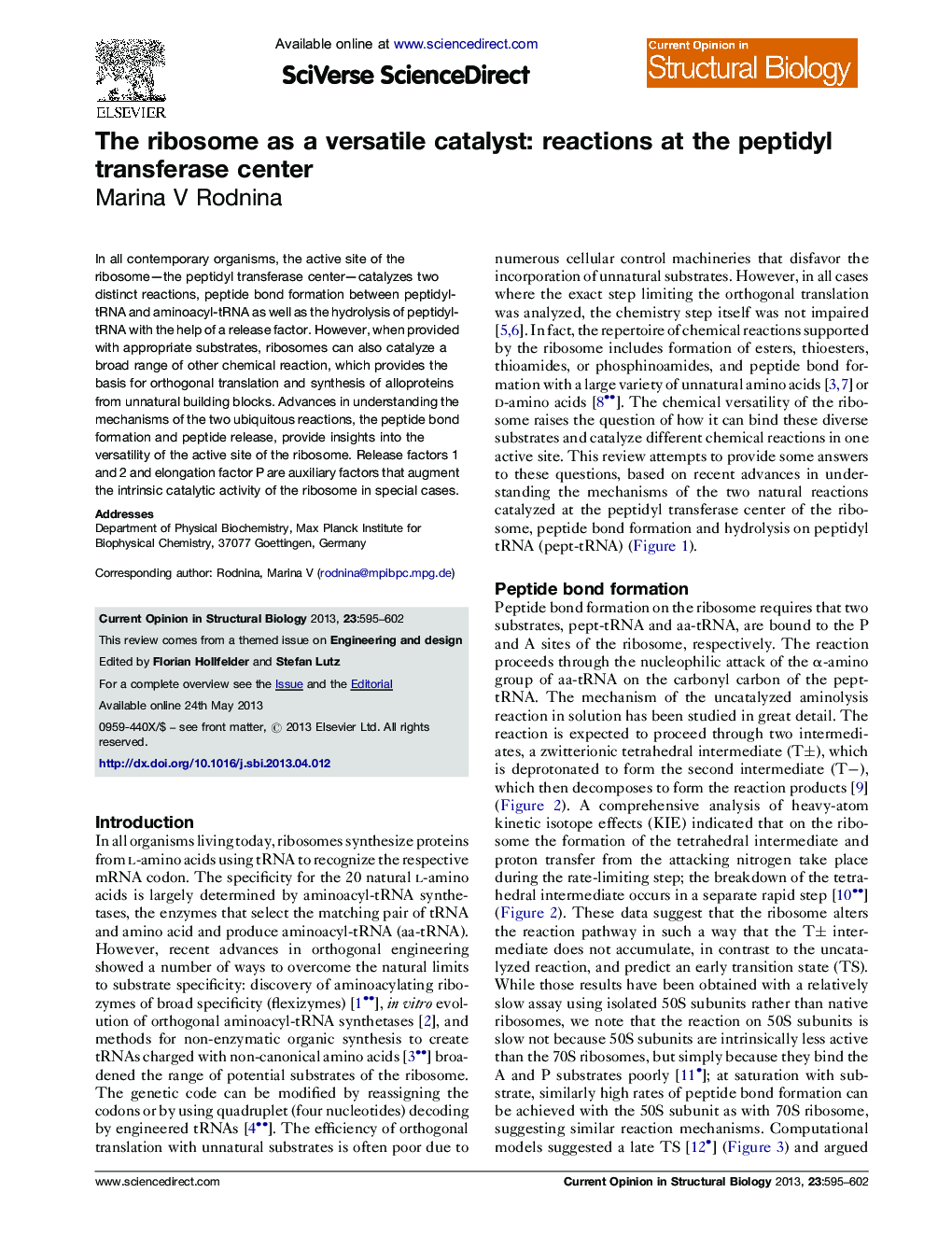| Article ID | Journal | Published Year | Pages | File Type |
|---|---|---|---|---|
| 1979312 | Current Opinion in Structural Biology | 2013 | 8 Pages |
•The ribosome's active site catalyzes diverse chemical reactions.•Peptide bond formation proceeds through a fully concerted proton shuttle mechanism.•The transition state of the reaction is early with three protons in flight.•Synthesis of polypeptides containing polyproline strings is promoted by EF-P.•A single proton in flight and a hydroxide ion take part in peptidyl-tRNA hydrolysis.
In all contemporary organisms, the active site of the ribosome—the peptidyl transferase center—catalyzes two distinct reactions, peptide bond formation between peptidyl-tRNA and aminoacyl-tRNA as well as the hydrolysis of peptidyl-tRNA with the help of a release factor. However, when provided with appropriate substrates, ribosomes can also catalyze a broad range of other chemical reaction, which provides the basis for orthogonal translation and synthesis of alloproteins from unnatural building blocks. Advances in understanding the mechanisms of the two ubiquitous reactions, the peptide bond formation and peptide release, provide insights into the versatility of the active site of the ribosome. Release factors 1 and 2 and elongation factor P are auxiliary factors that augment the intrinsic catalytic activity of the ribosome in special cases.
